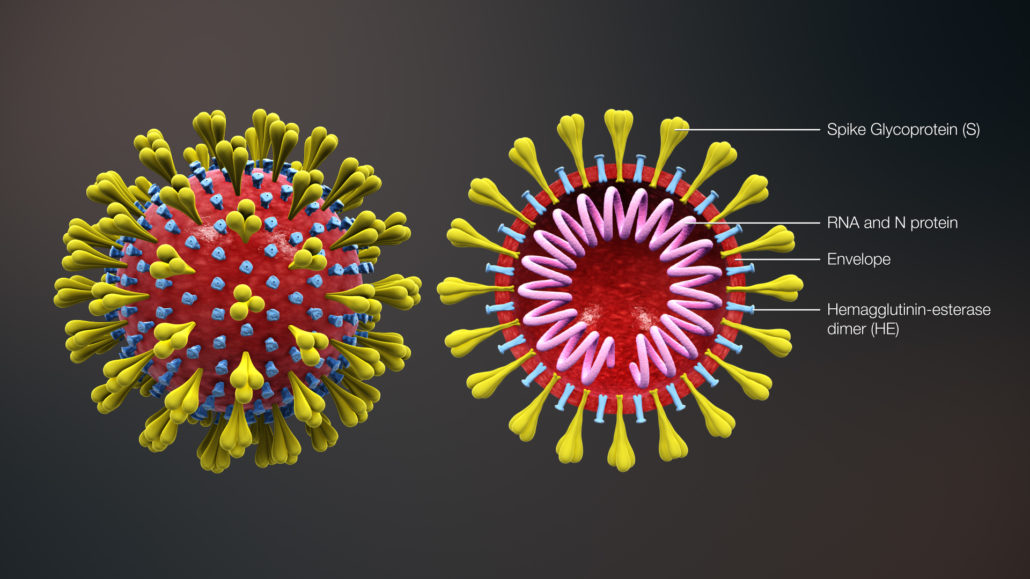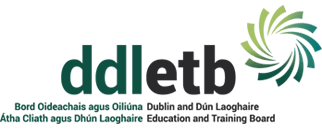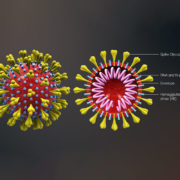Information On Novel Coronavirus (2019-nCoV)
The HPSC (Health Protection Surveillance Centre) has provided information on the Novel Coronavirus.
What is the Cornonavirus?
Coronaviruses are a large family of viruses that circulate among animals, including camels, cats and bats, with some causing illness in humans e.g. SARS (civet cats) and MERS (dromedary camels). Rarely, animal coronaviruses can change and infect people and then spread between people such as has been seen with MERS and SARS.

Images combined from a 3D medical animation, depicting the shape of coronavirus as well as the cross-sectional view. Image shows the major elements including the Spike S protein, HE protein, viral envelope, and helical RNA. Image from wikimedia.
What are the symptoms?
Common signs of infection include:
- respiratory symptoms i.e. cough, shortness of breath and breathing difficulties,
- fever,
- in more severe cases, infection can cause pneumonia, severe acute respiratory syndrome, kidney failure and even death.
How to prevent infection
Standard recommendations to prevent infection spread include:
- regular hand washing,
- covering mouth and nose when coughing and sneezing,
- avoid close contact with anyone showing symptoms of respiratory illness such as cough or sneezing
- avoid visiting wet or live markets and contact with animals, excretions and droppings
- thoroughly cooking meat and eggs.
- If you are unwell on return from travel to an affected area, contact your healthcare provider and tell them of recent travel.
For more information on the Coronavirus see the HPSC website.




